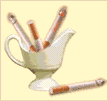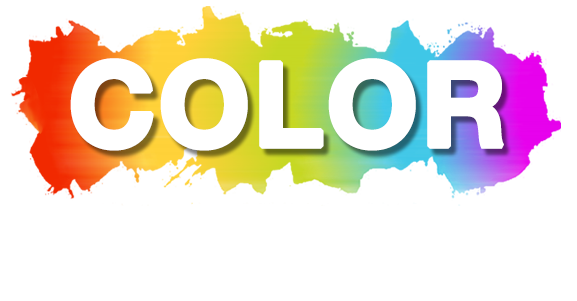Words used to describe red![]()
We are six billion people living in a color-drenched world. In fact, there are one million colors that the human eye can distinguish. (Others put the number as high as 7 million.)
How we translate colors into language is a formidable and endless task. If we begin with a search for standard terms, we'll find Berlin and Kay’s linguistic study. It lists eleven basic color terms that fall into three classes:
Black, gray, white (achromatic color terms)
Red, green, blue, yellow (primary color terms)
Brown, orange, purple, pink (secondary color terms)
However, people obviously make many more subtle distinctions in color than merely these eleven cited by Berlin and Kay. Back in the 1930s - 40s, the British Colour Council published a Dictionary of Colour Standards that often had very strange names for colors, like Bee Eater Blue, Kermes, and Squirrel. Currently, the NBS/ISCC system defines a set of 267 color centroids with intuitive yet scientific standardized names (such as "light grayish red"). This sadly neglected system is as close as we’ll get to a standard for English color terms.
Other resources are Standard Color Terms by Berlin and Kay and The Visual Nature of Color by Patricia Sloane. (Although some reviewers disagree with the factual nature of some chapters, the book includes a long list of color names derived from objects and a reprint of the ISCC list of 267 major color classes.)
On the other hand, most people don’t use standard terms like "light yellowish brown" to describe "tan." A greater issue is how we might define popular descriptive terms that are less scientific.
For example, in our current world of non-standard terms, most people are familiar with colors described by words such as crimson, indigo, chartreuse and khaki. Some may have difficulty with puce (a purplish-brown), cerise (cherry red), viridian (green with a tinge of blue), ochre (dark yellow), and cyan (blue-green). Painters and designers may have an easy time with common pigment terms such as ultramarine, umber, sienna, quinacridone violet and phthalo blue. Others may choke.
Another problem is posed by similar yet distinctly different color terms, such as burgundy (a dark blue-based red) and maroon (a dark brown-based red). Others may debate turquoise and aqua, fuchsia and magenta. For example, the color swatches in PowerPoint might label aqua as something different from the aqua in the web-safe color chart. If we turn to the NBS system, we'll find "medium blue-green," "deep greenish blue," and many other similar hues. The rest is up to us.
Speaking of turquoise, this term and chartreuse are examples of several common English terms of French origin - that most people recognize - but very few can spell (and understandably so). Bizarre spellings also arise from fuchsia, a familiar term for "hot pink." Aside from sincere efforts to spell the term phonetically, including "fuschia,v the correct spelling - fuchsia - was derived from the name of a German botanist, Leonard Fuchs.
Given this state of affairs, over 140,000 people have taken the Global Color Survey at Color Matters. In the beginning, people could answer by entering any text as an answer to a question. (For example: Which color do you associate with "Good Luck"?) If a person considered green to be a lucky color, they could type "green" or "kelly green," or any description of the color. As we reviewed the answers to all the questions, we found 792 terms for green. Such as: snappy green, summer tree-tops green micro-green, kindergarten green, dookie green, cheap-ass 7-11 green, frog egg green, and peridot green. The best by far was "basement bathroom green."
Of note were the 1,000 plus terms used to define whites, off-whites, and beige. Adjectives such as glistening, pearly, shimmery, blinding, glittering, and gleaming were frequently coupled with white. More common terms, such as ivory, ecru, parchment, vanilla and cream, were used for off-whites and very light browns. Once again, some imaginative terms arose. "Time Card Beige" and "Nicotine Cream" won the awards in this area of the color wsheel.
Finally, there were quite a few terms (in the database) that pushed the limits of our minds, as well as several web search engines. We share them with you now.
Annatto = orange-yellow
(the rich golden color of cheddar cheese actually comes from the seeds of the annatto plant)
Eau-de-Nil = a light shade of green
Gamboge = brownish orange
(Asian yellow gum resin; reddish yellow color)
Peridot = pale green, a variety of olivine
Amaranth = a deep reddish purple to dark or grayish, purplish red
(amaranthine-unfading, eternal, purple)
Anthracite = coal black
Cochineal = red
Note:
Most definitions were found at Tiscali Reference - A Dictionary of Difficult Words
The best reference for Universal Color Terms: Universal Color Language, Level 3




